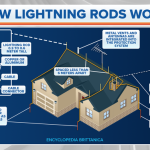If you’ve ever stood on a platform watching a sleek train glide into the station, you probably didn’t think about the army of specialists who make that moment possible. Beyond the engineers who design the locomotives and the drivers who operate them lies a lesser-known but equally vital role: the rail consultant. They are the problem-solvers, the navigators, and sometimes, the mediators who keep the railway industry running not just on time, but into the future.
Not Just About Tracks and Trains
A rail consultant’s job might sound niche, but in reality, it touches on an impressive range of areas: transport policy, infrastructure planning, operations management, safety regulations, environmental concerns, and even public relations. If the railway is a giant, intricate jigsaw puzzle, the rail consultant is the one who helps make sure every piece fits—without leaving sharp edges sticking out.
In practice, that might mean advising governments on where to build the next high-speed rail link, helping a freight company improve its supply chain efficiency, or guiding a train operator through the maze of safety compliance rules. It’s strategic work that blends technical expertise with big-picture thinking.
The Day-to-Day: More Boardroom Than Engine Room
It’s a common misconception that a rail consultant spends most of their time out on the tracks, wearing a hard hat and a high-vis vest. While site visits are part of the role, much of the work happens in meeting rooms, planning offices, or even video calls spanning time zones.
Take the case of Rachel, a senior rail consultant working on a commuter network upgrade. Her week might involve:
- Presenting cost-benefit analyses to city planners.
- Coordinating with engineers to ensure new signalling technology integrates seamlessly with existing systems.
- Meeting community representatives to address concerns about noise, construction timelines, or environmental impact.
- Keeping an eye on global rail innovations—from driverless metros in Dubai to maglev trains in Japan—to see what could be adapted locally.
By Friday, she’s part analyst, part diplomat, part futurist.
Rail Consultants as Storytellers
While it’s easy to think of railway work as rigid and technical, rail consultants often find themselves in the role of storyteller. They translate complex engineering data into a narrative that makes sense to decision-makers who may never have set foot in a signal control room.
For example, when advising on a new intercity connection, a consultant might frame the project not as “reducing journey times by 12 minutes” but as “giving 40,000 daily commuters an extra hour with their families every week.” Numbers matter, but so does the way you tell the story.
This storytelling ability can be crucial when lobbying for funding, rallying public support, or convincing stakeholders that a project is worth the disruption it might cause in the short term.
The Global Influence of Rail Consultancy
Rail consultants are not confined to their own countries. Many work on projects that cross borders—sometimes literally, as with transnational freight corridors, and sometimes figuratively, by bringing lessons learned from one rail system to another.
Consider the way Scandinavian countries have integrated sustainable energy into their rail networks. A rail consultant who has seen that model in action could help a developing country leapfrog older, more polluting systems straight to greener alternatives.
Similarly, consultants often help standardise practices. While rail gauges, safety codes, and operational styles vary worldwide, there’s an increasing push for interoperability, especially in regions like the EU. The consultant’s role here is part diplomat, part engineer, ensuring that different systems can work together without costly or dangerous mismatches.
Challenges on the Line
It’s not all smooth rides. Rail consultants often navigate political pressures, budget limitations, and conflicting priorities. One local government might want a flashy high-speed train for prestige, while the actual need might be for affordable, frequent suburban services.
They also work in an industry where timelines are long. A rail project might take a decade from planning to completion, meaning consultants must balance immediate fixes with future-proofing. Imagine advising on technology when today’s state-of-the-art signalling could be obsolete before the first train even runs.
Then there’s the challenge of public perception. For every passenger who dreams of faster, cleaner trains, there’s another worried about fare hikes, property disruption, or tax burdens. The rail consultant’s task is to address those concerns without derailing progress.
The Future of Rail Consultancy
As rail systems evolve, so does the role of the rail consultant. Digitalisation, automation, and sustainability are reshaping the industry. Consultants now find themselves working on projects involving:
- Autonomous trains that run with minimal human intervention.
- Predictive maintenance systems powered by AI, which prevent breakdowns before they happen.
- Green rail initiatives, from electrification to hydrogen-powered locomotives.
- Smart stations that integrate seamlessly with other modes of transport, from buses to e-scooters.
This shift demands that consultants keep learning—not just about rails and sleepers, but about software, climate policy, and human behaviour.
Why This Role Matters More Than Ever
In an age where climate concerns and urban congestion are pressing global issues, rail transport is enjoying a resurgence. It’s fast, efficient, and far greener than road or air travel when done right. But “done right” doesn’t happen by accident—it happens because someone has thought through every possible outcome, from track layout to ticketing apps.
That’s where the rail consultant steps in. They are the quiet force making sure that the romantic image of trains as symbols of connection, progress, and sustainability holds up in reality.







